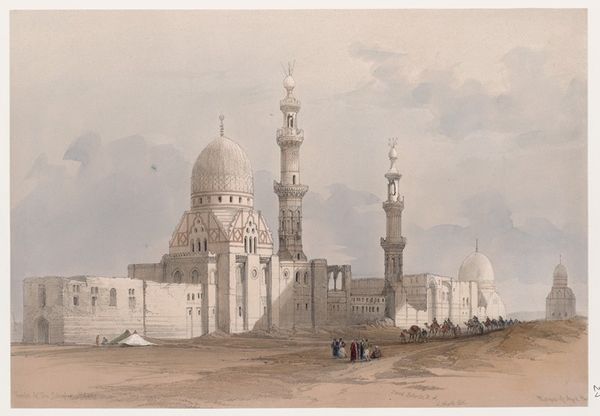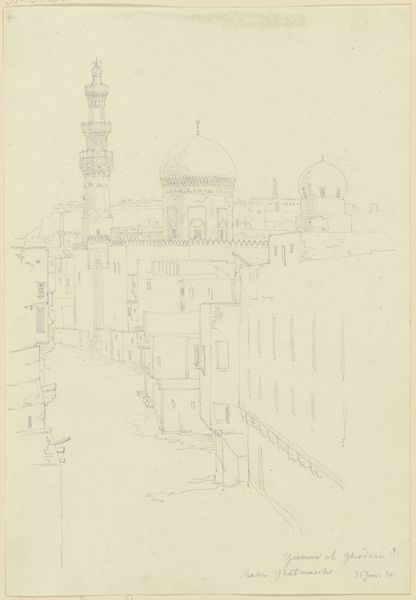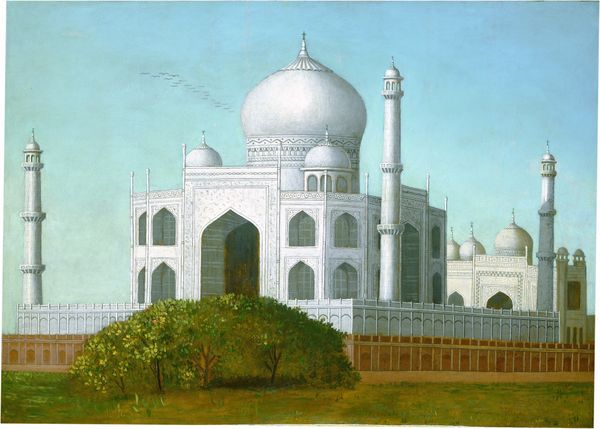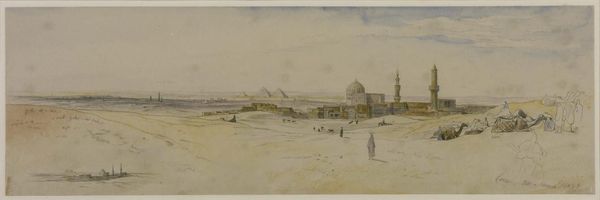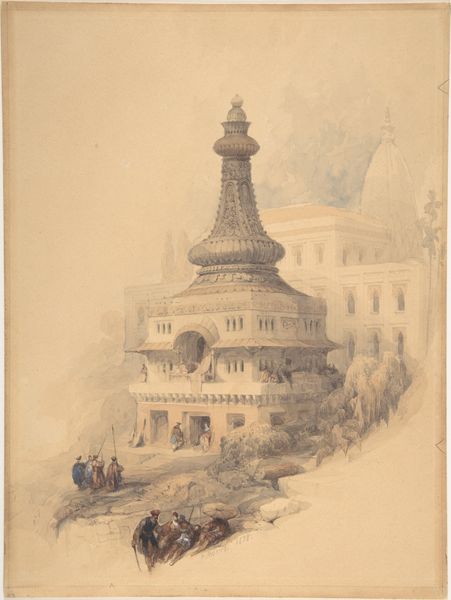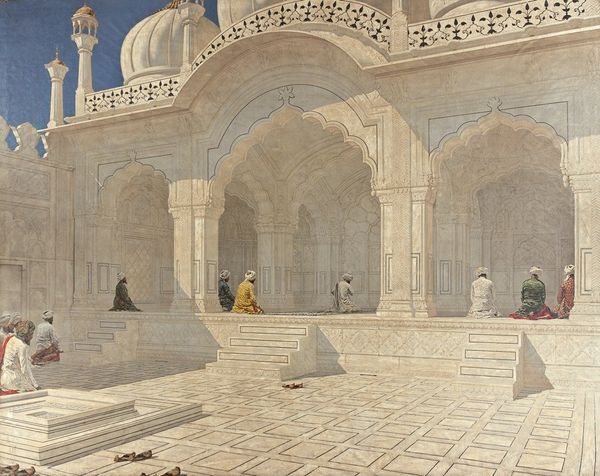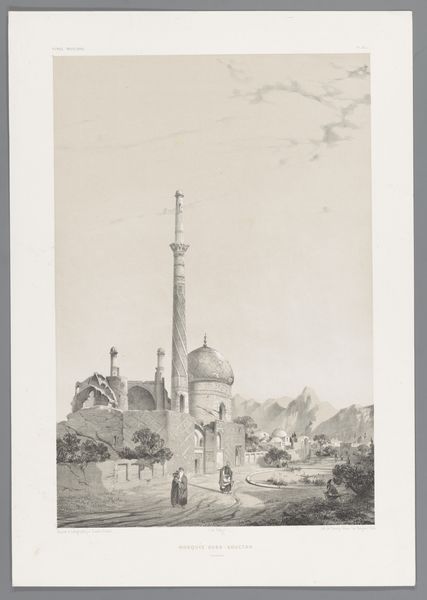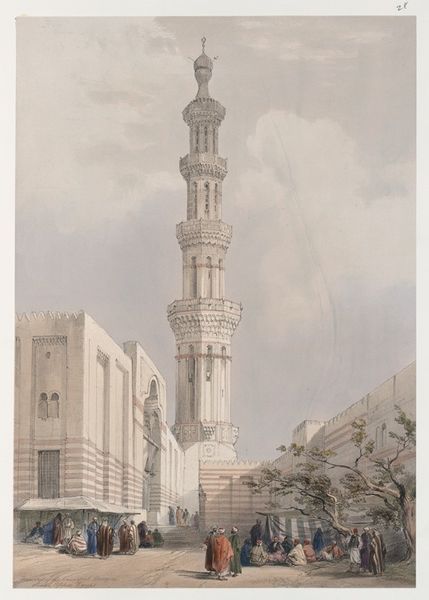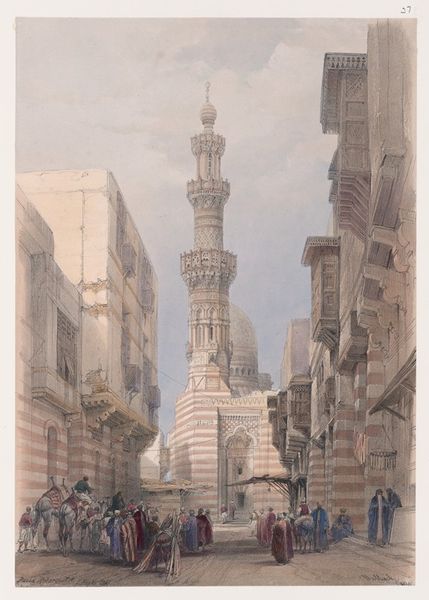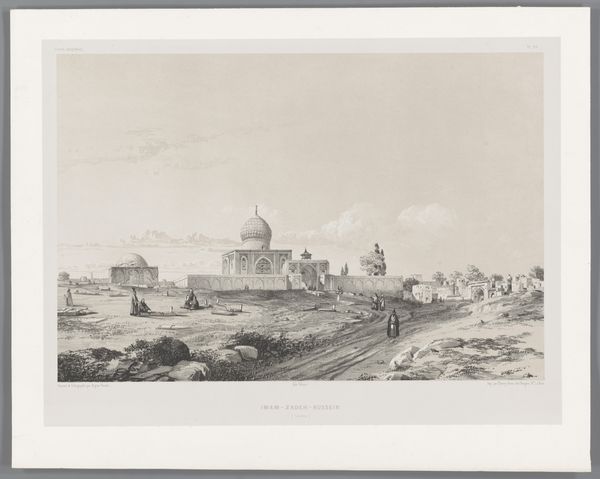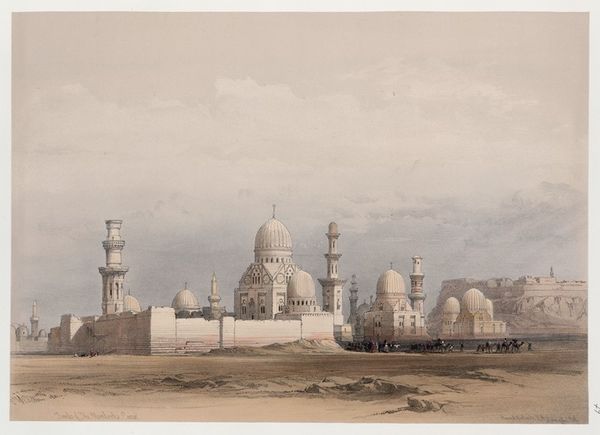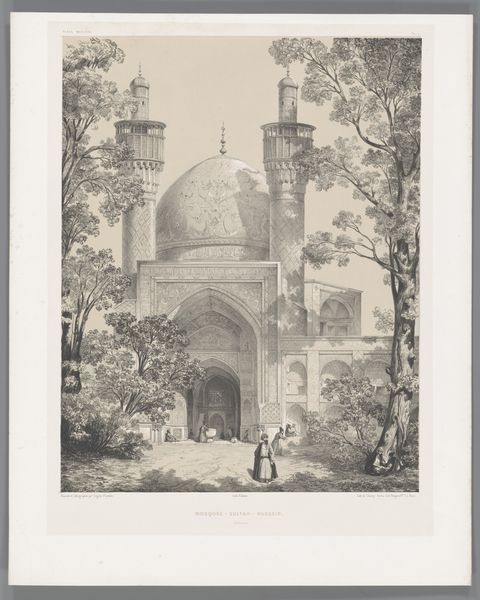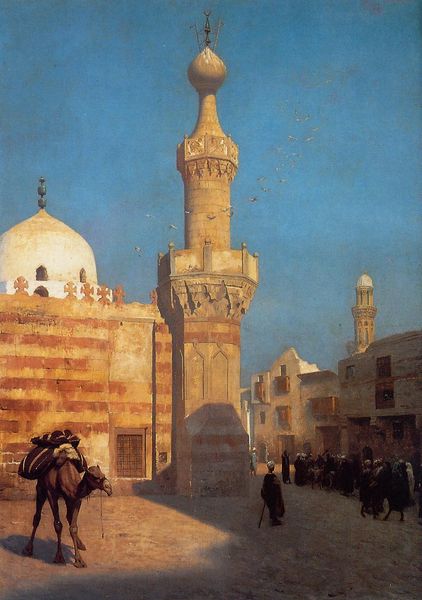
drawing, watercolor
#
drawing
#
16_19th-century
#
landscape
#
charcoal drawing
#
oil painting
#
watercolor
#
orientalism
#
islamic-art
#
watercolour illustration
#
watercolor
#
realism
Copyright: Public domain
Curator: Owen Jones’s “Tomb near Cairo,” completed around 1833, is an exquisite example of his skill with watercolor and drawing, marrying realism with the burgeoning style of Orientalism. What strikes you first about it? Editor: It's the overwhelming stillness and muted color palette. A sense of bleached light seems to dissolve the forms, yet the monument looms. It speaks to me of colonialism, this serene yet imposing view. Curator: Precisely. Jones, as an architect and designer, was deeply invested in the process of translating what he encountered into patterns and principles applicable to Western design. He would've studied how it was built, how its materials functioned in that harsh climate, and the labor needed for such buildings. Editor: And by presenting it this way, what narrative is he constructing about the East? Are these travelers meant to soften the presence of such a stark building or emphasize its isolation? It certainly positions European viewers in a place of assumed privilege to witness such a carefully constructed composition. Curator: It also encourages our contemplation about craft versus high art. Jones would have thought deeply about the practical means of achieving visual effects with watercolor techniques versus methods with different cultural prestige. I am intrigued by the role that material processes, watercolor for example, may have played in facilitating Orientalist depiction of subjugated territories. Editor: It's impossible to view art, especially landscapes depicting colonized territories, without considering power dynamics, how identities are being shaped, and how this view potentially supported specific politics in the West. It prompts essential conversations around agency, representation, and historical contexts deeply entangled with Orientalism's problematic legacy. Curator: I find it is vital to also notice how Jones manipulates pigment to mimic the textures of stone and fabric. Studying his technique reminds us how closely aligned art and craft often are in practice. His skills are more complicated and multifaceted than you might gather at first glance. Editor: True. Still, those subtle hues do little to mask that feeling of an encounter fraught with imbalance. Curator: Understanding both Jones's skillful making and the setting he's presenting invites questions, and demands an ethical commitment to interpreting the past with thoughtful interrogation. Editor: It leaves me hoping the future moves towards perspectives that offer visibility and agency where these have been denied.
Comments
No comments
Be the first to comment and join the conversation on the ultimate creative platform.
